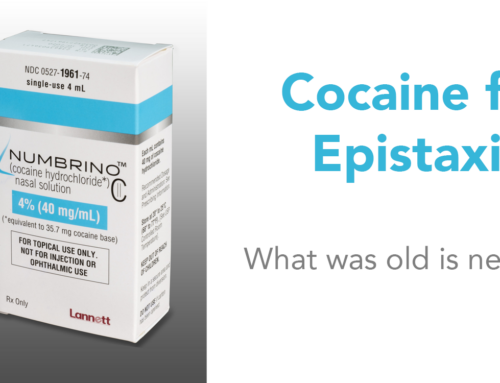 The Toxicologist Mindset series features real-life cases from the San Francisco Division of the California Poison Control System.
The Toxicologist Mindset series features real-life cases from the San Francisco Division of the California Poison Control System.
Case: A 39-year-old man, with no significant past medical history, was brought to the emergency department by family members, over three consecutive days, for anxiety, confusion, and ataxia. In the first two visits, his laboratory work-up, including complete blood cell count, chemistry panel, liver function tests, urine drug screen, and non-contrast head CT, were unremarkable. On his third visit, he was profoundly encephalopathic with confusion and poor concentration. He had bilateral lower extremity weakness and ataxia. He was admitted to the neurology service for further work up. Additional history revealed that hundreds of empty canisters of whipped cream chargers were found in his house.
1. Why might this patient be abusing whipped cream chargers?
Whipped cream chargers, colloquially known as “whippits,” “whippets,” or “hippie crack,” is a steel cartridge filled with nitrous oxide (N2O) gas. In whipped cream cans, dissolved nitrous oxide gas from the cartridges helps the cream transform into a frothy, whipped state upon dispensing. Inhalation of N2O produces a state of analgesia, depersonalization, derealization, dizziness, euphoria, and sound distortion.1 Cartridges are generally easy to obtain, either on the internet, in head shops, or on the street.
2. What is the mechanism of myeloneuropathy by nitrous oxide?
Nitrous oxide produces irreversible oxidation of cobalt in vitamin B12, rendering the vitamin B12 molecule functionally inactive. The functional deficiency of vitamin B12 results in an inability to incorporate phospholipids into myelin sheaths, resulting in neuropathy.2 Patients typically present with complaints of numbness, paresthesias, or weakness, and physical exam findings show changes in gait or coordination, difficulty walking, and falls.1 Most case reports describe neurologic sequelae after “chronic” abuse of N2O; however, an exact amount and duration of usage conferring risk has not been well defined.
3. What psychiatric sequelae are associated with nitrous oxide abuse?
In a recent systematic review, 12% of cases of abuse presented with a wide range of psychiatric complaints.1 Symptoms ranged from delirium, confusion, bizarre behavior, agitation, and memory problems. While typical vitamin B12 deficiency is associated with a megaloblastic anemia and neuropsychiatric sequelae, psychiatric symptoms after N2O abuse are not necessarily associated with high mean corpuscular volume. In some cases, delirium may be secondary to concomitant use of illicit substances.1
4. What laboratory or imaging studies could help confirm the diagnosis of nitrous oxide abuse?
There is no formal screening tool for N2O abuse. A detailed patient history is often the key to making the diagnosis.
- Vitamin B12 levels: May be normal or low
- Methylmalonic acid (MMA) and/or total serum homocysteine levels (precursors in vitamin B12-dependent pathways): May be elevated
- T2-weighted MRI images: There have been reports of hyperintense signals in the posterior and/or lateral spinal cord at the cervical and/or thoracic levels.
5. What are some treatment modalities that need to be considered?
The most important intervention is the discontinuation of N2O abuse. Intramuscular and oral vitamin B12 supplementation has also been described. Patients will also require supportive care including an evaluation for fall risks at home due to persistent ataxia. Complete resolution of neuropsychiatric symptoms is variable. In 59 cases of neurologic sequelae after N2O abuse:1
- Recovered completely: 10/59 cases
- Symptom improvement: 46/59 cases
- Psychiatric sequelae
- Complete resolution: 5/11 cases
- Improved symptoms: 2/11 cases
Case Outcome
The patient’s mental status and ataxia improved over the course of 3 days. He endorsed using anywhere from 50-100 canisters of nitrous oxide per day. He was diagnosed with chronic nitrous oxide toxicity that was further confirmed by an elevated MMA acid level. He was started on vitamin B12 therapy.
This Toxicologist Mindset series features real-life cases from the San Francisco Division of the California Poison Control System. Some elements of the patient’s case may have been altered to help provide additional patient anonymity.





